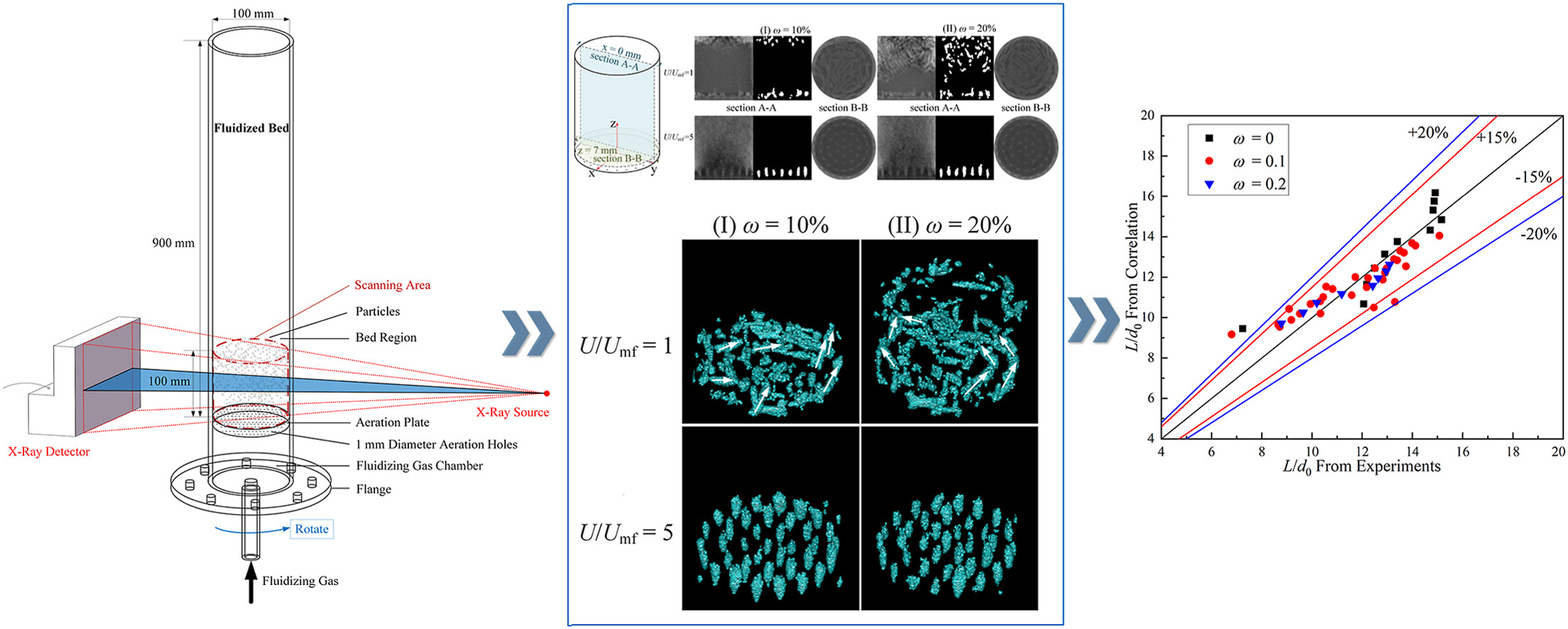• High-resolution tomography captures aeration jets in fluidized beds.
• Key factors of jet formation in non-spherical particle fluidization.
• Particle density dominates jet morphology over sphericity.
• Novel correlation for jet length in binary fluidized beds.
Fluidization of non-spherical particles is commonly found in the biomass and solid waste processing industry, and the jetting characteristic above the aeration plate is critical to the fluidization performance of these particles. In this study, cylindrical particles are used as typical non-spherical particles and co-fluidized with small bed material particles. X-ray computed tomography (XCT) is used to reconstruct the 3D structure of the aeration plate region, allowing for the identification of individual aeration jets. The effects of jet velocity (Uj), cylindrical particle mass fraction (ω), cylindrical particle density (ρi), and the cylindrical particle sphericity (ϕ) on jet shape and volume are investigated. The experimental results indicate that decreasing the cylindrical particle mass fraction (ω) and particle density (ρi) increases the jet length (L), maximum jet diameter (D), and maximum jet volume (V), but have little effect on the jet half angle (θ). The cylindrical particle density (ρi) is the most sensitive factor for jet shape, while the effect of cylinder particle sphericity (ϕ) on jet shape is insignificant. A correlation of jet length (L) in a two-component fluidized bed with cylindrical particles and bed material is proposed based on all the experimental results.

